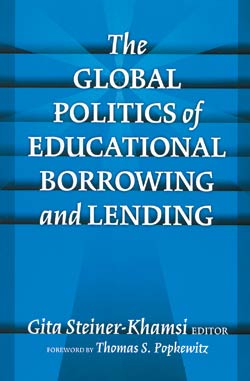A Borrower and Lender Be
Can the "best practices" of schools in Scotland work in South Africa? Who makes those decisions-and how?
That's the main question debated by contributors to The Global Politics of Educational Borrowing and Lending, edited by TC Professor Gita Steiner-Khamsi, as they examine the growing global phenomenon of educational borrowing and lending practices.
"Borrowing is never wholesale," explains Steiner-Khamsi. "Sometimes it is only just the rhetoric." For example, in Latvia, during the Soviet period, schools were segregated by ethnicity and language, a form of apartheid that put Latvians at a huge disadvantage. Today, Latvian politicians- hoping to gain admittance to the European Union by fulfilling the EU mandate to "treat minorities well"- employ the rhetoric of "multicultural education" to tout separate schools as a means of preserving Latvian language and culture.
Yet countries that borrow ideas from other systems increasingly refer to these reforms as the "new international standard" that must be complied with. The question then becomes: Are educational reforms in different corners of the world all becoming alike?
While no clear answer emerges, the diversity of opinion certainly does. Contributors to the book include TC Associate Professor Fran Vavrus, and several former doctoral students at the College; Charles Tilly of Columbia University; David Phillips of Oxford University; Juergen Schriewer of Humboldt University in Berlin; and Phillip W. Jones of the University of Sydney. Thomas S. Popkewitz, Professor of Education at the University of Wisconsin, Madison, and a leader in the field, wrote the foreword.
Published Tuesday, Apr. 19, 2005
